The Red-Eyed Tree Frog, scientifically known as Agalychnis callidryas, is one of the most recognizable and beloved amphibians in the rainforests of Central America. Known for its vivid colors and distinctive red eyes, this frog has fascinated nature enthusiasts and scientists alike. Let’s delve into the fascinating world of the Red-Eyed Tree Frog, exploring its unique characteristics and lifecycle.
Characteristics and Appearance
The Red-Eyed Tree Frog is famous for its large, bright red eyes, which contrast strikingly with its vibrant green body. Its sides and thighs often flash in shades of blue and yellow, adding to its visual allure. This bright coloration serves as a form of defense, startling predators and offering the frog a chance to escape.
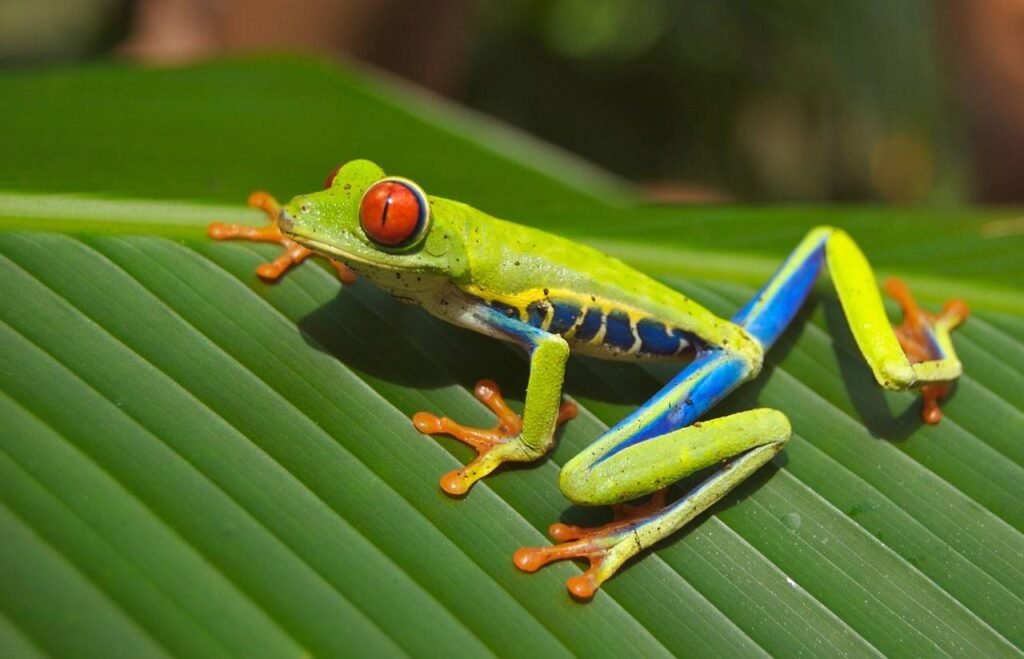
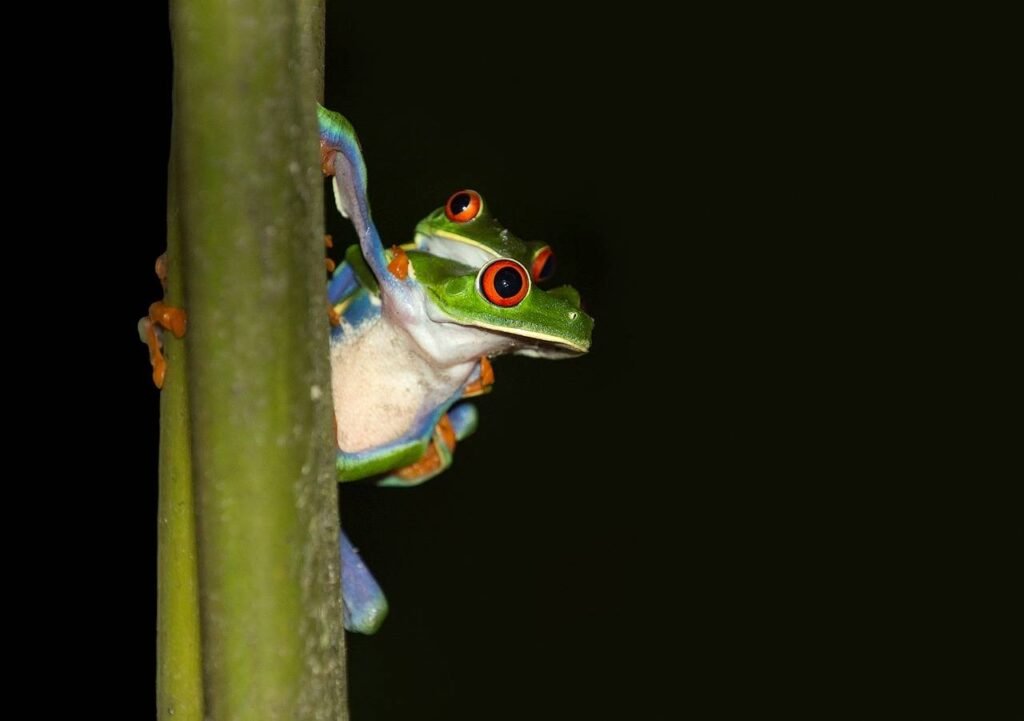
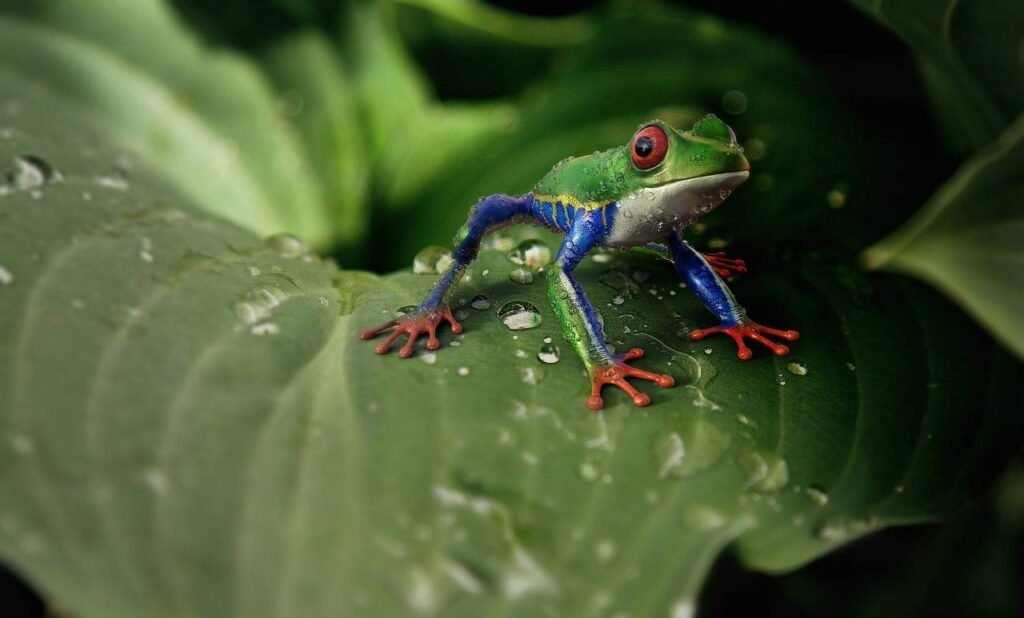
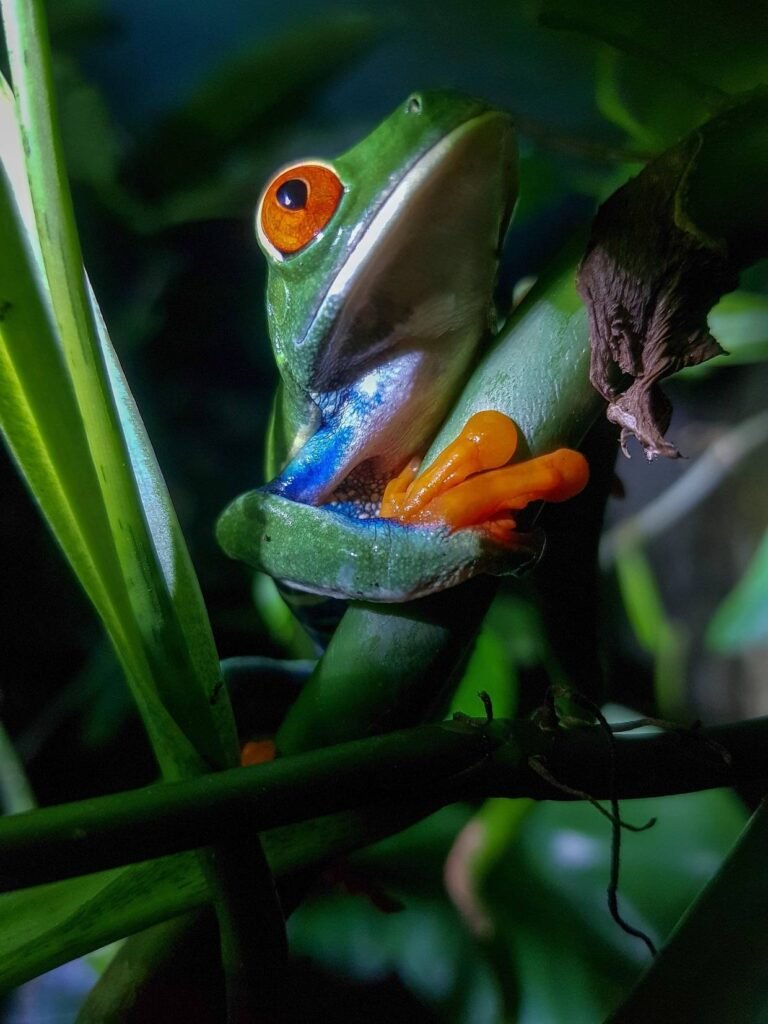
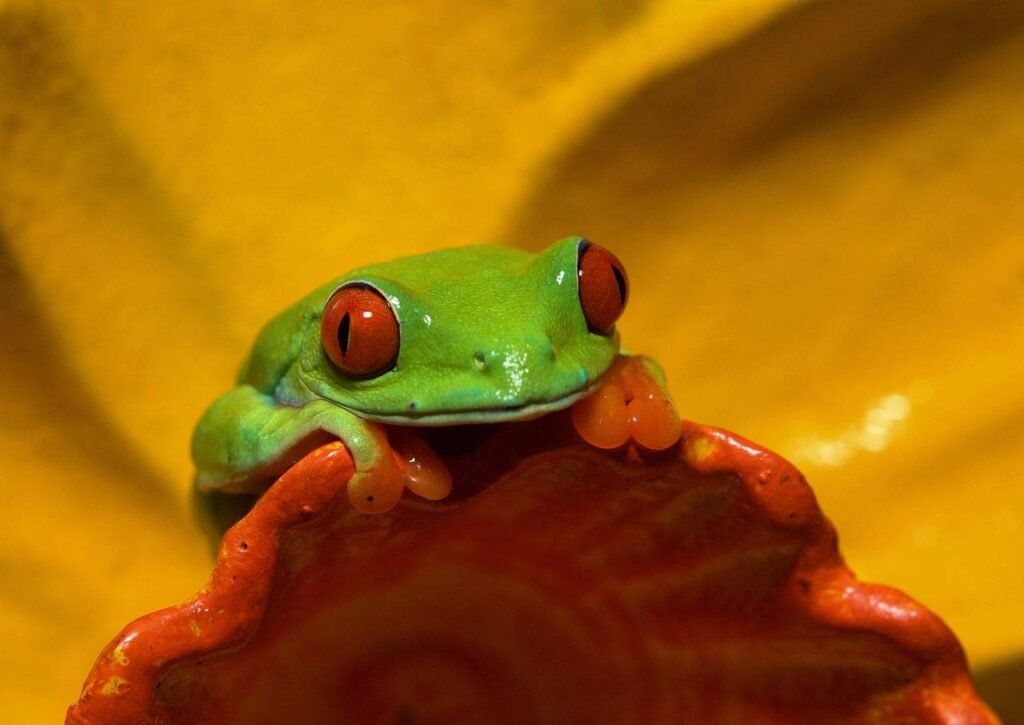
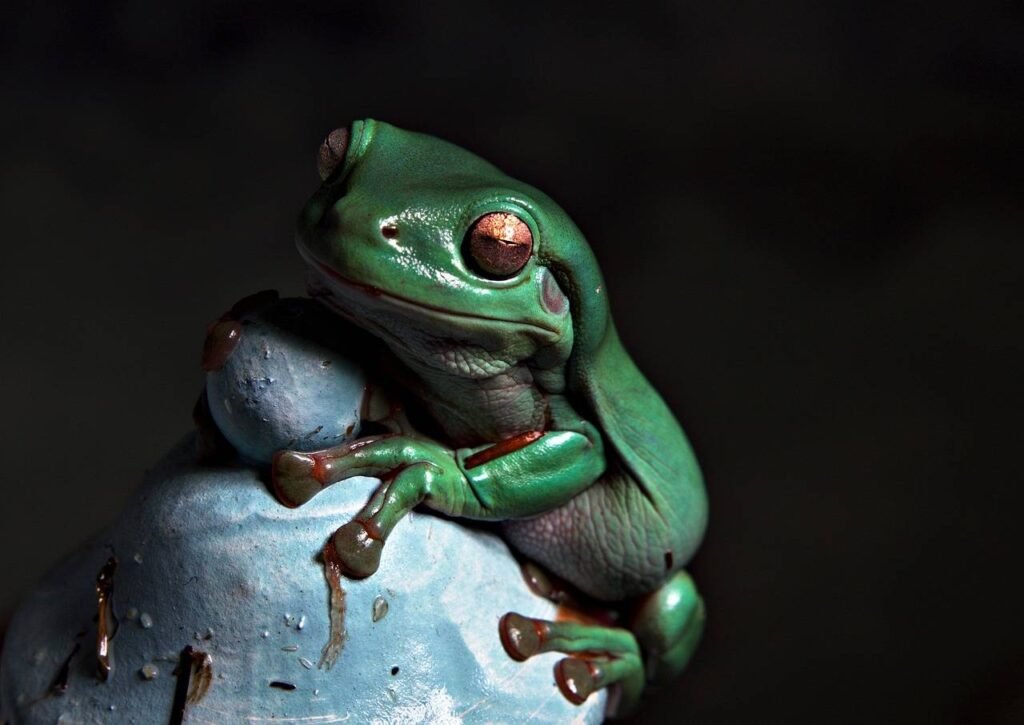
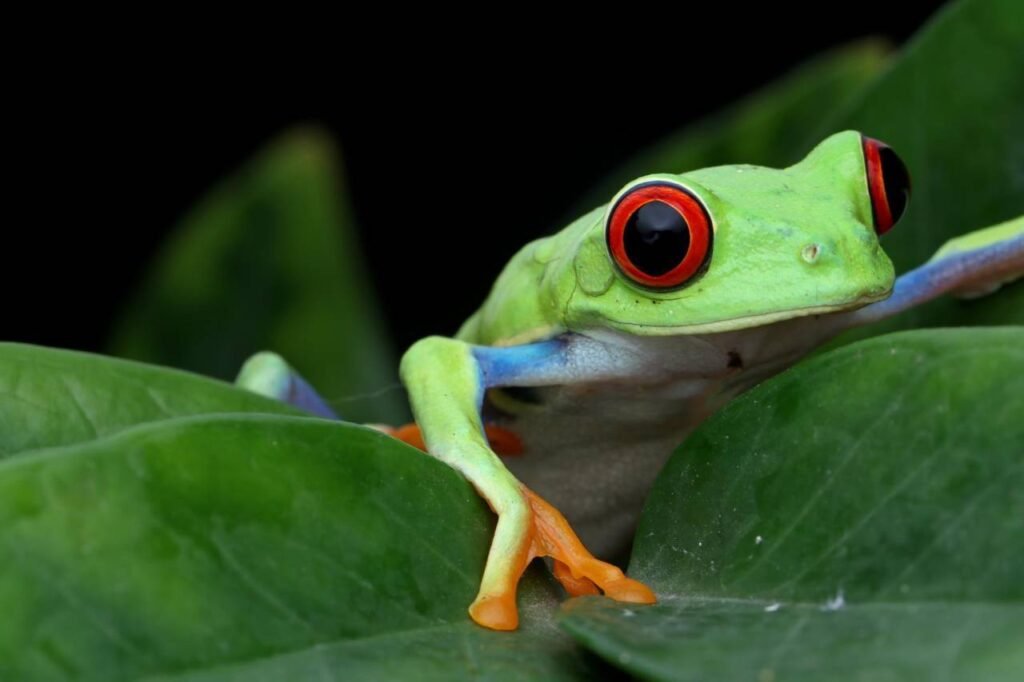

Habitat and Distribution
These frogs are native to the neotropical rainforests stretching from southern Mexico to Central America, including Panama and Costa Rica. They thrive in humid, lowland tropical forests, often found clinging to leaves at night near water sources crucial for breeding.
Toxicity and Diet
Although their alarming appearance suggests danger, the Red-Eyed Tree Frog is not toxic. It relies on camouflage and its quick reflexes for defense. It mainly feeds on insects, including crickets, moths, and flies, actively hunting after dusk.
Lifecycle and Development
The Red-Eyed Tree Frog undergoes a fascinating developmental process:
Eggs and Hatching:
Females lay their eggs on the undersides of leaves that overhang water bodies. This strategic placement allows the hatched tadpoles to drop into the water below. The eggs hatch in about six to seven days, with the environment’s temperature and humidity playing a role in development speed.
Tadpoles:
Once hatched, tadpoles spend several weeks to a few months in the water, where they undergo metamorphosis. During this period, they develop limbs and lungs, preparing for life on land.
Juveniles to Adults:
Young frogs emerge from the water as juveniles and mature into adults over several months. They reach sexual maturity around two years of age, ready to begin the breeding cycle anew.
Conservation Status
While not currently endangered, the Red-Eyed Tree Frog faces threats from habitat loss and climate change. Protecting their rainforest habitats is crucial for their survival and the overall health of their ecosystems.
FAQs About Red-Eyed Tree Frogs
Are Red-Eyed Tree Frogs toxic?
No, they are not toxic. Their vibrant colors and red eyes serve primarily as a defense mechanism to startle predators.
How long does it take for Red-Eyed Tree Frog eggs to hatch?
The eggs typically hatch in about six to seven days, depending on environmental conditions such as temperature and humidity.
At what age do Red-Eyed Tree Frogs reach adulthood?
They reach sexual maturity and become fully grown adults at around two years old.
What do Red-Eyed Tree Frogs eat?
They primarily feed on insects, including crickets, moths, and flies, relying on their quick reflexes to capture prey.
Why are Red-Eyed Tree Frogs important to their ecosystem?
They play a crucial role in controlling insect populations and serve as prey for larger animals, contributing to the ecological balance of their rainforest habitat.

